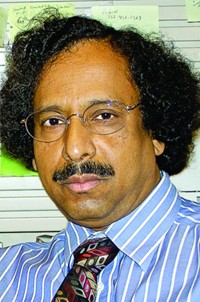Advertisement
Grab your lab coat. Let's get started
Welcome!
Welcome!
Create an account below to get 6 C&EN articles per month, receive newsletters and more - all free.
It seems this is your first time logging in online. Please enter the following information to continue.
As an ACS member you automatically get access to this site. All we need is few more details to create your reading experience.
Not you? Sign in with a different account.
Not you? Sign in with a different account.
ERROR 1
ERROR 1
ERROR 2
ERROR 2
ERROR 2
ERROR 2
ERROR 2
Password and Confirm password must match.
If you have an ACS member number, please enter it here so we can link this account to your membership. (optional)
ERROR 2
ACS values your privacy. By submitting your information, you are gaining access to C&EN and subscribing to our weekly newsletter. We use the information you provide to make your reading experience better, and we will never sell your data to third party members.
Education
Community Launch Pads
November 19, 2007
| A version of this story appeared in
Volume 85, Issue 47
I am an 11-year faculty member and administrator of a comprehensive community and technical college in southeastern Kentucky (C&EN, Sept. 3, page 69). Our students are among the poorest in the nation; ACT scores are the lowest among Kentucky community colleges; and 75% of our students have a developmental deficiency in one or more areas of math, reading, and English. Yet we have one of the highest graduation rates in our system because we realize that an education is one of the best ways to break the cycle of poverty that exists here. It is truly an honor to work with these students; we encourage them to "Stay Close, Go Far."
Nearly 50% of the students who study chemistry begin their work at a two-year college. Our students readily succeed in preprofessional programs, engineering, and medical school. Still, it takes much effort to persuade a student at a community college that he or she really can do the work regardless of their educational background—whether that student has a GED, three kids, or a full-time job on top of their studies just to make ends meet.
There's another reason why "community" is in our name. We go further than the classroom; we are in the community with them. So when they succeed, the community succeeds as well.
Wheeler Conover
Cumberland, Ky.



Join the conversation
Contact the reporter
Submit a Letter to the Editor for publication
Engage with us on Twitter